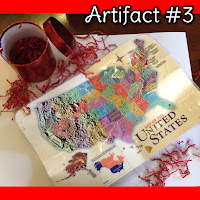The Ending of a Beautiful Beginning
I started this semester being overwhelmed with the work that was put out in front of me. I felt that it was too much and I wouldn't be able to accomplish what I wanted to, to the best of my abilities. I was wrong. I have proven myself and although I faced a few new challenges along the way, I reached my ultimate goal of completing this course. I feel relieved that I have finished this course and I know that in my heart, I truly expressed myself to my fullest potential.
I enjoyed my experience throughout the course. It was interesting and very engaging with the amount of work and the type of lessons that we had to develop. I enjoyed every minute of it and it is something that I will carry with me throughout my education career. The learning outcomes of this course were clearly stated in the beginning and even though I felt that I often got confused or frustrated throughout my experience, I found this experience to be long worth while. Thanks to this course, I feel comfortable and confident as a future educator that will teach Social Studies. I didn't have nearly as much confident as I do now in the beginning. I learned a lot about designing lesson plans for Social Studies and how I can personally make Social Studies a memorable experience for students. Out of all of my successes, my greatest success was completing the livebinder e-folio. When I first took a look at the livebinder, I was shocked and astonished upon seeing how much work needed to be put into it and as the final group to complete their field work, I felt as if we were at a disadvantage. I completed my unit plan and e-folio and I feel that my livebinder is as perfect as I could make it. I don't believe that I had any major failures throughout this course because I make sure that my school work is my major priority and that is exactly what I did.
I gained a lot from this experience. The experience has benefit me in a variety of ways. I will take my experience with me throughout my education career and it will always have an impact in my future profession. I learned so much about teaching Social Studies. Thanks to my experience, my future Social Studies classroom will be full of engaging props and resources that I can use to help with creating the most interactive, encouraging lessons that I possibly can. I noticed that to transform a "boring" subject, you have to make it interesting and intriguing to the student's eye and that is just what I plan to do. It's sad to think that now my Social Studies experience in college has come to an end, but I am excited to move onto the next chapter in my life.
 |
| Thank you Dr. Smirnova for making this experience something that I will cherish forever. Thanks to you, now I feel confident with being a successful, powerful Elementary Social Studies. |














